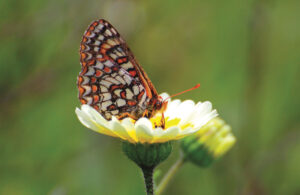According to a first-ever regional state-of-the-birds report recently released by PRBO Conservation Science, many Bay Area bird populations are stable. State of the Birds 2011: San Francisco Bay looks at indicator species in six habitats around the Bay: salt pond, tidal flat, tidal marsh, subtidal, upland, and man-made. Twenty authors from a variety of organizations contributed to the report.
A closer look reveals both good and bad news: In tidal marshes, populations of song sparrows, saltmarsh common yellowthroats, and California black rails are stable and increasing. But endangered California clapper rails have continued to nosedive due mostly to predation by raccoons, red foxes, and house cats. Although great blue heron and great egret populations have fluctuated in the last decade, they are stable overall. But black-crowned night herons and snowy egrets have been declining since 2005. The two habitat types associated with the greatest bird declines are in the uplands: coastal scrub-chaparral (27 percent of species in decline) and grasslands (more than 45 percent).
PRBO says the birds of San Francisco Bay continue to face threats from habitat loss, invasive plants, pollution, and climate change, but the report’s take-home message is that the birds also benefit from the work of a thriving conservation community. “There is a long history of groups and individuals in the Bay Area who have studied birds, restored habitats, and contributed to detailed data sets,” says PRBO’s Melissa Pitkin, “and it is that culmination of interest and dedication that has allowed us to publish this report.” Human action is the birds’ greatest hope, and PRBO has developed a list of specific actions citizens and scientists can take to protect the Bay’s diverse community of birds. Learn more at prbo.org.

.jpg)



